Nunalleq Project consists of an archaeological site excavation and a digital educational tool at Yukon-Kuskokwim region; the excavation process, results and Yup’ik storytelling ways weave together an engaging educational tool, for and from the community!
The project as a whole rethinks the science of archaeology; using public archaeology connects history and local tradition in a contemporary way.
At the initiative of the local community, who found artefacts at the beach, in 2009 a team of archaeologists led by the University of Aberdeen, United Kingdom, began excavations on a pre-contact Yup’ik settlement. The project unearthed 100.000 artefacts exhibited for the first time in 2018 at the Nunalleq Culture and Archaeology Center in Quinhagak, Alaska. The principal concerns of the local community were to create an engaging display that incorporates their identity and connects with the younger generation, which resulted in the creation of the educational tool.
The site is a late pre-contact Yup’ik settlement of c. AD 1570-1675, 5 km south of present Quinhagak, it consists of a semi-subterranean sod and timber dwelling of several rooms. The settlement was occupied on two instances by generations before being burnt and abandoned, known today in the Yup’ik oral history as the ‘Bow and Arrow Wars’. In addition, the excavation brought to light aspects of the pre-contact life currently unknown today.
Engaging the audience is an arduous task amongst archaeologists, as they struggle to create tangible connections to present life, this project, however, provided a truly fascinating approach to narrative creation and engagement.
Nunalleq Educational Resource, Stories from the Village of our Ancestors
The educational tool is a desktop application that presents through the archaeological finds, the site, traditions and history. You can interact with artefacts from the site, learn the way of life, explore the site and even gain insights on the science of archaeology.

©The Nunalleq Educational Resource
The projects span over 2.5 years with a team of 13 archaeologists and volunteers and 17 community members and Yup’ik culture bearers, including community Elders and other heritage professionals.
The Quinhagak village board urged for the resource to be in a digital format to engage the younger generation. Thus the user group focused on Yup’ik schoolchildren between ages 7 to 15. On this basis, the other criteria for the product design were set, namely:
- which technology would be ideal
- media types (3D objects, video, audio, imagery) and a multi-vocal narrative on the archaeological site
- available hardware in the school environment and technologies
- accessibility, with flexible and visual navigation system
- interactivity
- adaptive to incorporate new finds
To address the criteria, the team agreed on creating a stand-alone desktop application on school computers, as internet connectivity is difficult in the region, using open source technologies.
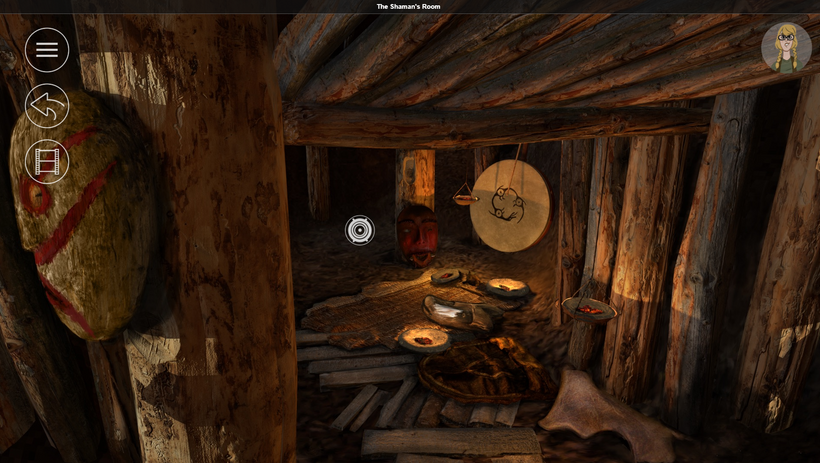
©The Nunalleq Educational Resource
The 3DVisLab at the University of Dundee took up the programming of the application. Initially, the project focused on visually identifying the elements and interface before constructing the narrative. The visuals were created with a unique, seemingly hand-drawn style, that featured the artistic and cultural character of the Yup’ik community in the past and present.
Once all stakeholders were on the same page, the team reached out to the community, both the youth and Elders. They compiled questions, facilitated intergenerational communication with interviews and focused on the Yup’ik language as a key element of tradition. Therefore, the application language features a compilation of voice recordings in Yup’ik and English. Native cultures of the region use spoken word, beyond communication as a way to transmit history and culture with oral storytelling. The application acknowledges the language as part of the intangible heritage value of the site itself and reflects it accordingly with the recordings.
The tool preserves the memory and identity through the archaeological dig site while leaves room for the newer generation to continue evolving their culture.
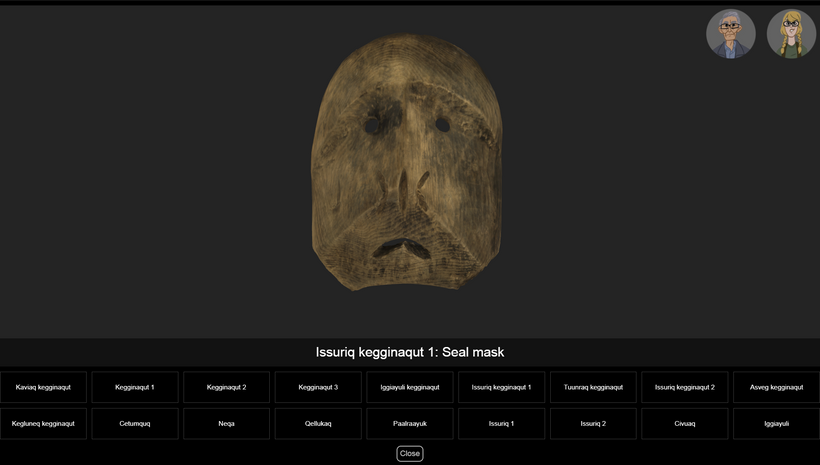
©The Nunalleq Educational Resource
Moreover, further tools were developed for teachers to introduce in their classroom. Youth identifies song and dance as the most predominant aspects of their culture celebrated today in festivals and taught in schools. Living cultures require active participation over passive observation consequently, the newer generation can compose new dance and songs related to the project.
See here: https://vimeo.com/306223839
This activity extends to the carving of Yup’ik masks using traditional methods. Furthermore, within the application, you can view masks in 3D as well as create your own mask.
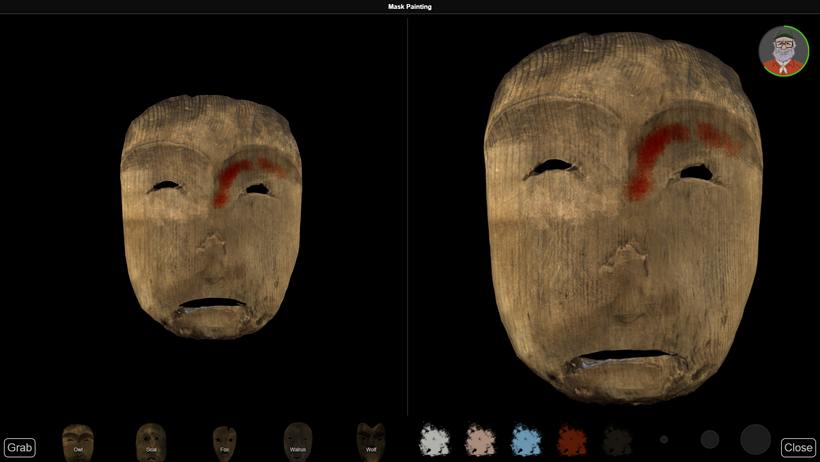
©The Nunalleq Educational Resource
The archaeological process is also featured in the application, you are able to visit the archaeologist’s desk and learn the methodology and tools used in the field.
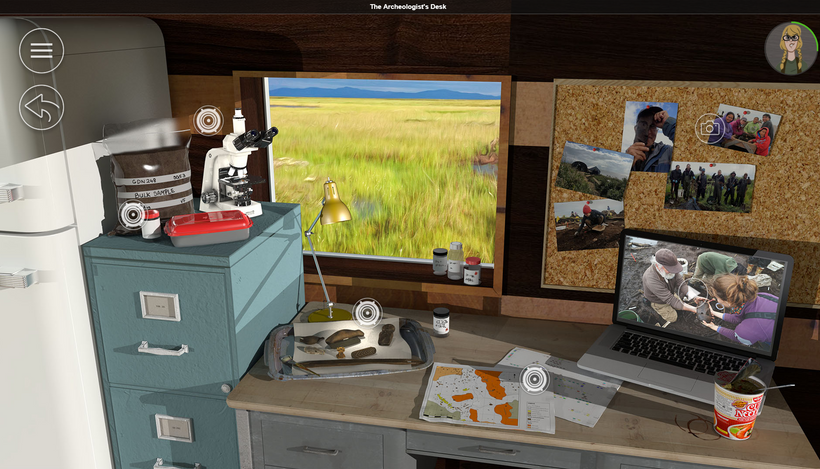
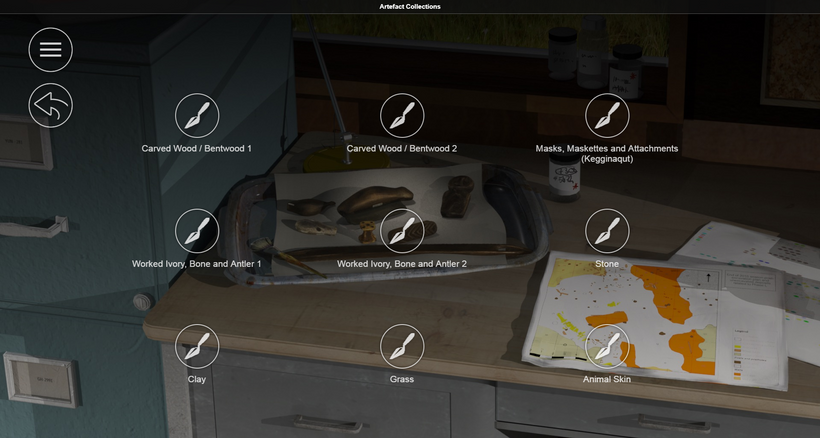
©The Nunalleq Educational Resource
Our take:
Public archaeology is fundamental to create a true connection to the past, the local community in this instance safeguards its past while creating future connections; they are allowing their culture to evolve by remembering their identity. The project was sensitive to and included the local community every step of the way from excavation to dissemination. Their processes were well documented and took into account all of the stakeholder’s needs resulting in a unique digital experience. The Nunalleq project is a benchmark for every community caring about their heritage!
I want to learn more:
Download the application here: www.seriousanimation.com/nunalleq
How Did You Live? Writing A Song for Nunalleq
Nunalleq, Stories from the Village of Our Ancestors: Co-designing a Multi-vocal Educational Resource Based on an Archaeological Excavation by Charlotta Hillerdal and Alice Watterson
Nunalleq: Archaeology, Climate Change, and Community Engagement in a Yup’ik Village by Charlotta Hillerdal, Rick Knecht, and Warren Jones
Bridging Past and Present: A Study of Precontact Yup’ik Masks from the Nunalleq Site, Alaska by Anna Mossolova and Rick Knecht

